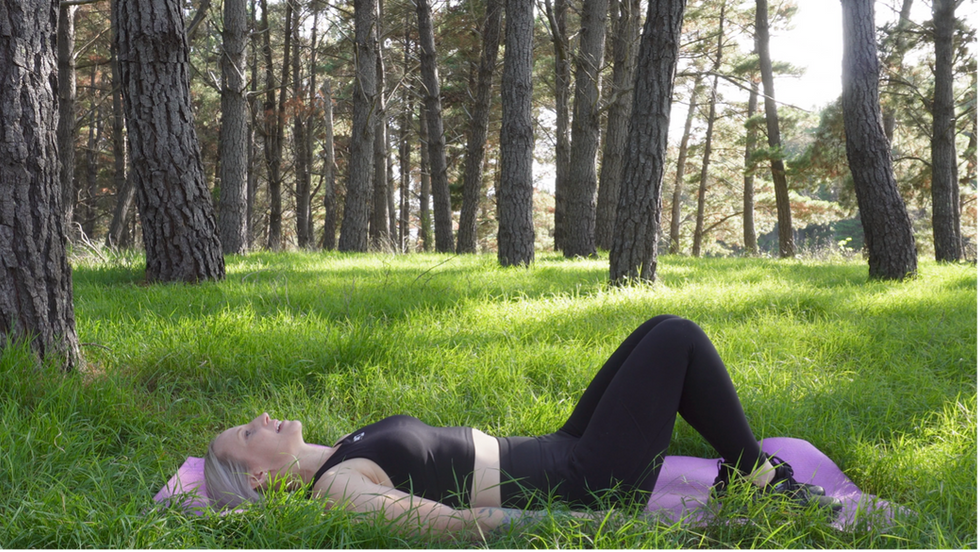Low back pain is common with the World Health Organisation reporting that in 2020, low back pain was the single leading cause of disability worldwide, affecting 619 million people (World Health Organisation, 2023). Despite this staggering statistic, it is not all bad news. The World Health Organisation also concluded that low back pain is the condition for which the greatest number of people may benefit from rehabilitation. So, rehabilitation and exercise can help to reduce pain and improve function for many living with low back pain.
This article covers four rehabilitation exercises for low back pain. This article includes information as seen in the video Low Back Pain Relief Exercise Routine + 3 Low Back Pain Myths and forms part of the Back Pain Series.
Before completing exercises for low back pain it is important to understand the nature of the pain. This includes how long the pain has been present. Pain lasting under 6 weeks is considered acute, subacute pain lasts 6 to 12 weeks, and chronic pain lasts over 12 weeks. The exercises covered in this article are related to chronic pain rather than acute or subacute pain. That is pain lasting over 12 weeks.
In addition to understanding whether the pain is acute, subacute, or chronic, it is also important to understand if the pain is specific or non-specific. Specific pain can be attributed to a disease or injury such as a fractured vertebra, cancer, or referred pain from an organ such as a kidney. Non-specific pain is pain that is not attributed to a disease or injury. Non-specific pain accounts for around 90% of low back pain cases (World Health Organisation, 2023). Because most cases are non-specific, the exercises covered here are related to non-specific pain. That is, pain that is NOT caused by a specific disease or injury.
1. Knee to chest. Lying on a mat, with your feet flat and knees bent, use your hands to bring your right knee to your chest. Repeat with your left. The aim of knee to chest is to promote gentle movement of the lower back to release muscle tension and improve mobility. You might feel a slight dull ache but should not feel any sharp or severe pain.
2. Lumbar spine extension. Lying on your stomach leaning on your forearms, use your arms to lift your chest off the mat. Pause and come back down. The aim of lumbar spine extension is to ease pain and aid mobility. When completing extension, only go as far as comfortable. Again, you should not feel any sharp or severe pain.
3. Lumbar spine rotation. Keeping your feet flat and knees bent, with your arms outstretched to support your torso, turn your knees to the right. Pause, and then turn to the left.
4. Hip flexion and extension. Kneeling on your left leg, holding on to a chair, bend your right knee to lean forward, pause, and then bring your hips back to straighten your knee. This is a dynamic stretching exercise, when leaning forward you should feel the stretch in your left quadriceps, and when leaning back you should feel the stretch in your right hamstrings.
This article has covered four simple rehabilitation exercises for low back pain as well as the difference between acute and chronic pain and specific and non-specific pain. Of course, if you are unclear about the nature of your back pain it is important to seek advice from a medical or health care professional through a consultation.
I hope this article has been helpful. If you would like to refer back to the myths within this article, the accompanying video Low Back Pain Relief Exercise Routine + 3 Low Back Pain Myths can be found on the Age Fit with Tess YouTube Channel.
References
Low back pain. (2023, June 19). Www.who.int. https://www.who.int/news-room/fact-sheets/detail/low-back-pain#:~:text=Key%20facts
Pain-Ed. (2017, April 12). 10 facts about back pain — Pain-Ed. Www.pain-Ed.com. https://www.pain-ed.com/blog/2017/04/12/10-facts-about-back-pain/
%20copy.png)





















Comentarios